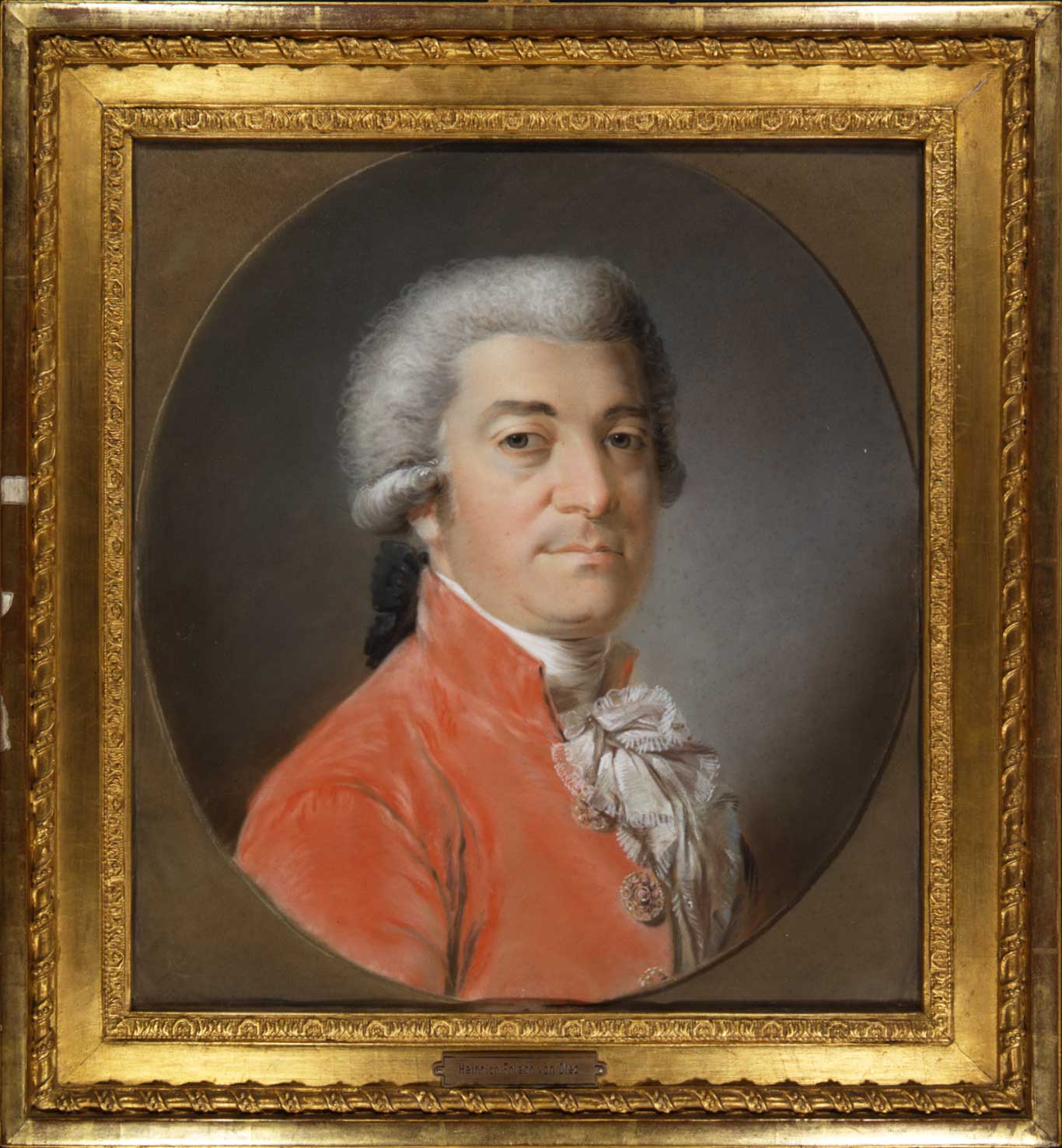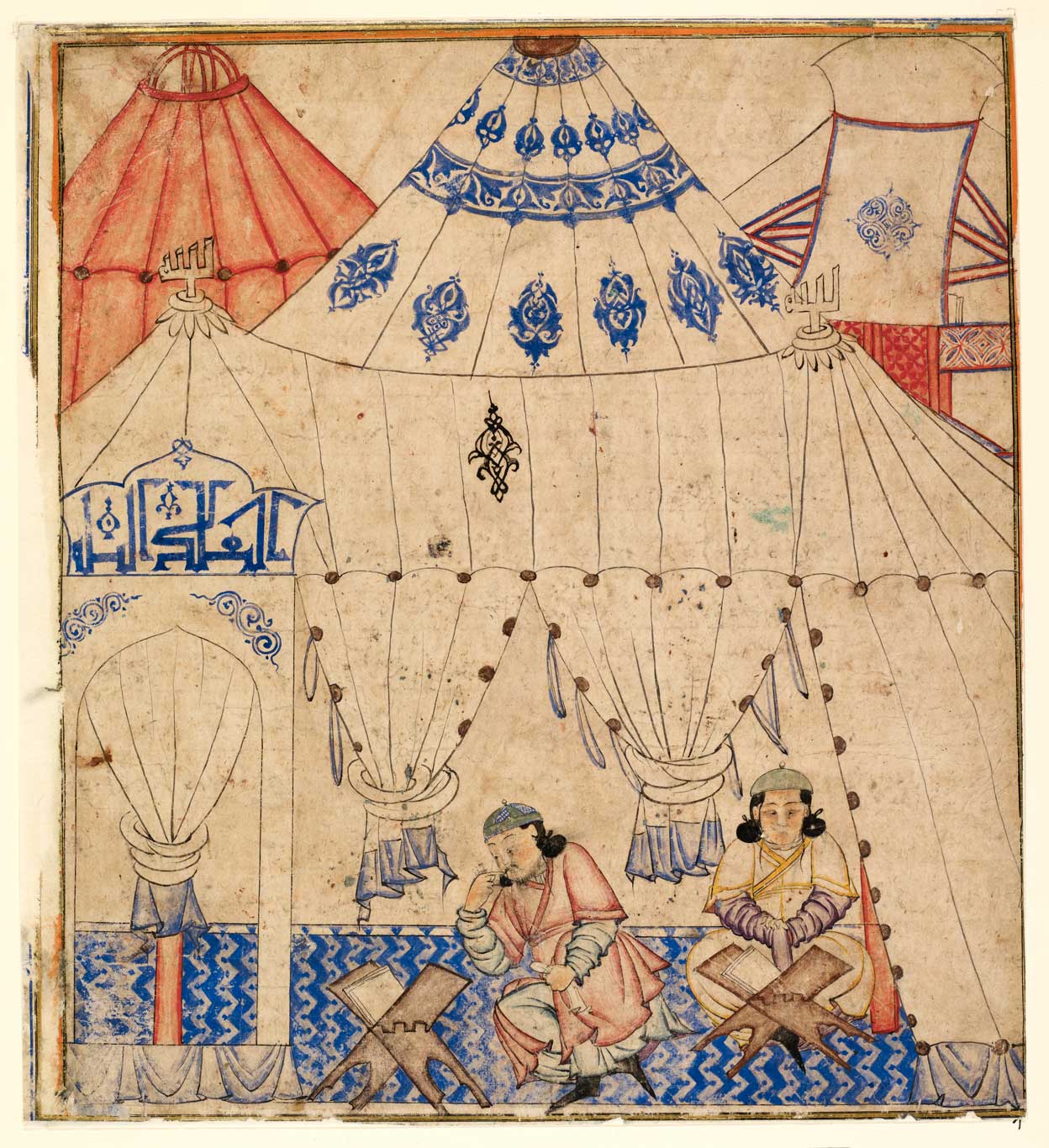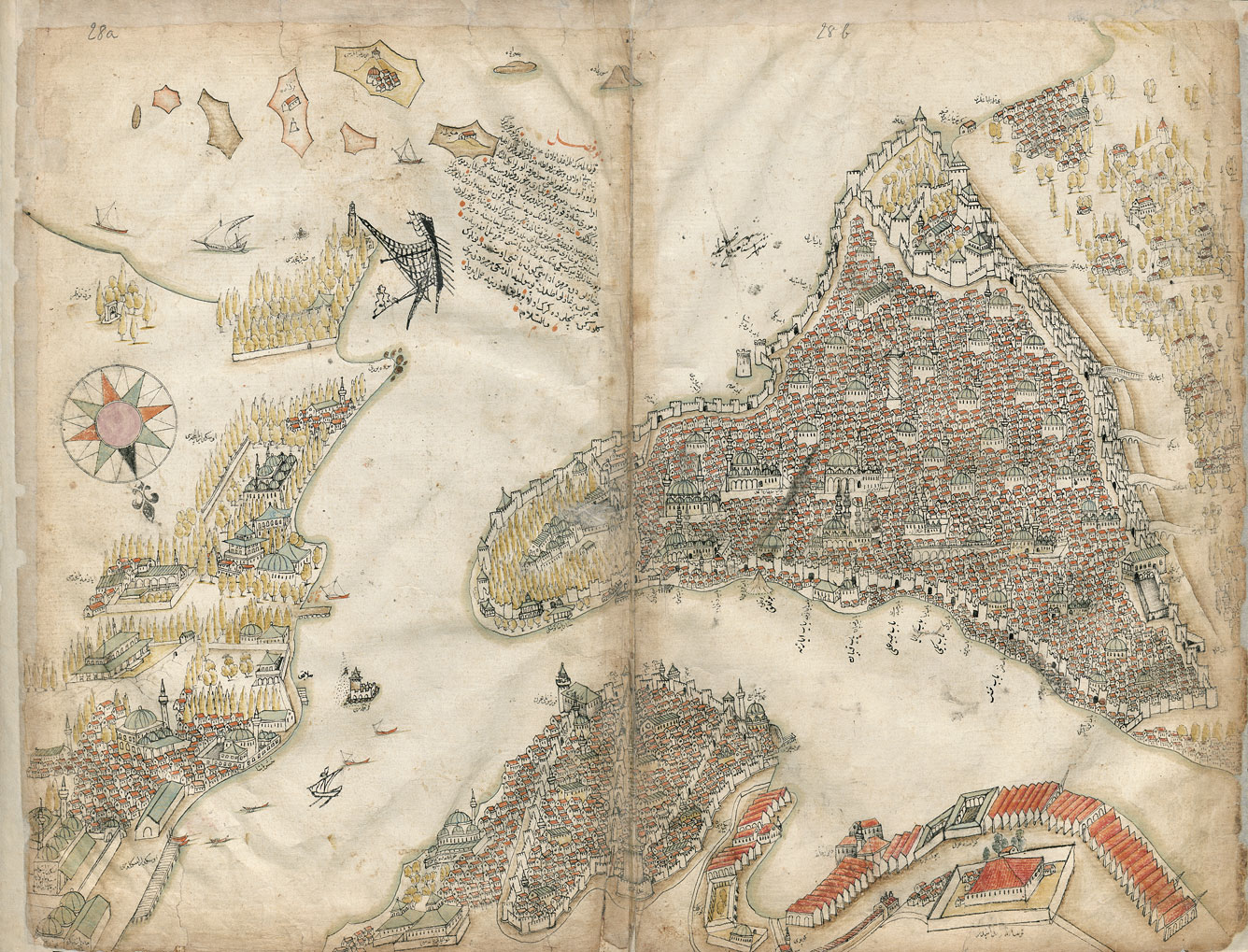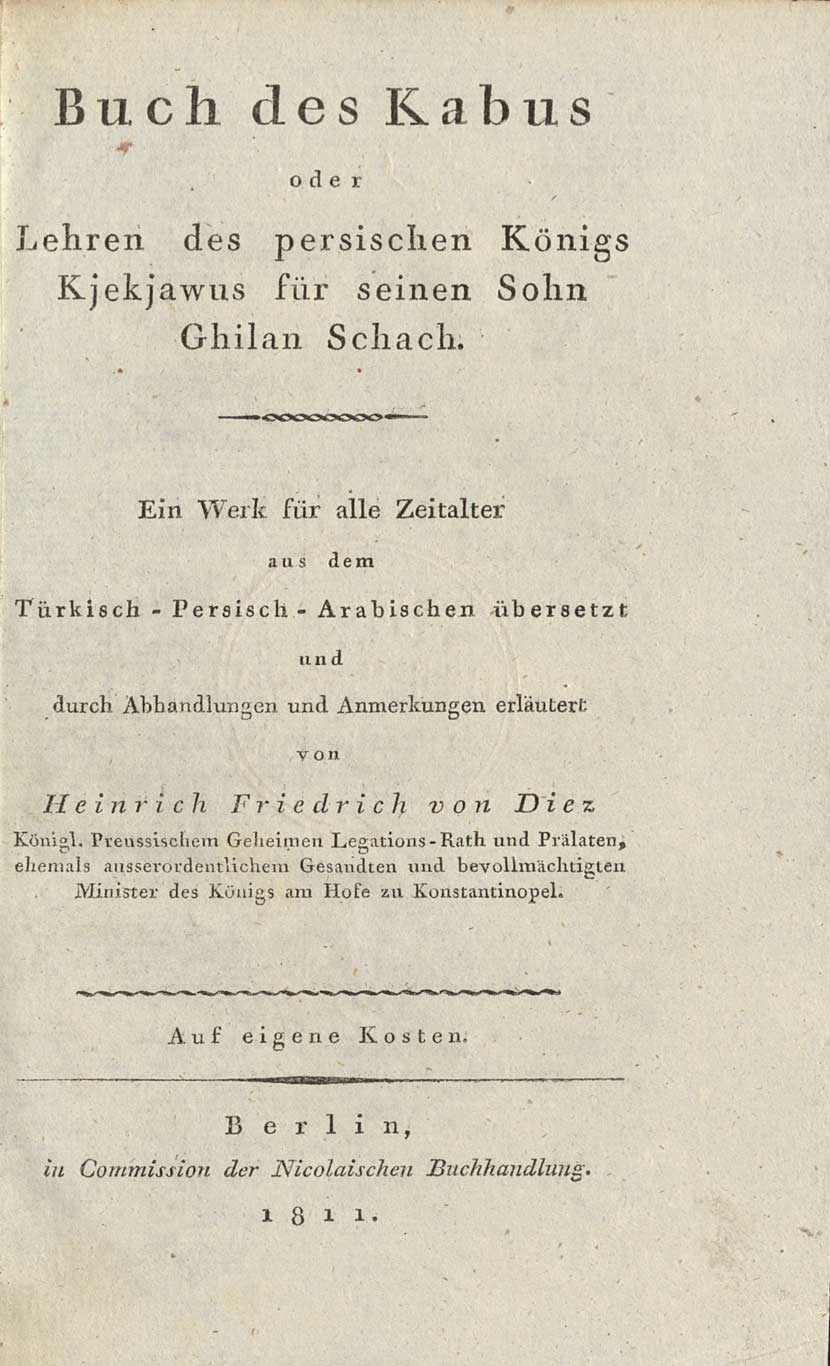9
A dazzling scholar and a world-class collection
Heinrich Friedrich von Diez
Portrait of Heinrich Friedrich von Diez, pastel painting, 1791.
SBB-PK / Office for images and photography. CC BY-NC-SA 4.0
The Diez Library
Heinrich Friedrich von Diez (1751–1817) was one of the most fascinating figures of German Late Enlightenment and a great booklover. At first the lawyer published numerous writings of radical enlightening content, before, in 1784, Friedrich II sent him to Constantinople as the Prussian envoy. When he was fourty years old, he retired as private scholar and concentrated on his studies of Turkish literature. His comprehensive book collection is one of the eminent scholar libraries preserved in the Staatsbibliothek zu Berlin. The collection comprises around 17,000 prints as well as more than 800 Western and Oriental manuscripts.
In 1784, when Heinrich Friedrich von Diez was 33 years old, he asked Friedrich the Great to make him Prussian ambassador in Constantinople. At the time, he was working in an administrative position in Magdeburg and spoke neither French nor any Oriental language. However, impressed by his striking demeanour and eloquence, Friedrich II appointed him ambassador. His six-year stay in Constantinople would completely turn his life around. Diez, a figure of the Enlightenment, had a love of polemics and was interested in philosophy, freedom of the press, and women’s rights. He utterly immersed himself in the foreign world and was fully committed to studying Turkish literature, language, and culture. He built an impressive library and was planning the translation and publication of Turkish works of literature, unknown to Europeans at that time.
By studying intensely and experiencing the Orient first-hand, Diez rose to become one of the most important Oriental scholars of his time. Later, he was admitted to the Prussian Academy of Sciences despite being self-taught.
Famous Orientalia from the Diez collection
The so-called ‘Diez albums’ are an important source of the history of Islamic painting and book art. The 430 miniatures and drawings are from the 14th and 15th century and mainly resemble the painting style of the Mongols and Timurides. Most probably these were purchased by Diez from harems (female members of the household) in Istanbul. The ‘Diez albums’ are some of the most outstanding items in the Staatsbibliothek zu Berlin.
Two Mongols studying the Quran, miniature from a ‘Diez album’, 14th/15th century digital copy
Another renowned item from the Diez collection is a copy of the so-called Atlas of Pīrī Raʾīs. It is a portolan chart or atlas, which was created under the supervision of the Admiral of the Fleet of Sultan Sulaimān. The work contains 50 maps, which depict the Eastern Mediterranean Sea, including a famous view of Istanbul. The chart was most likely made in 1521, one year before the Isle of Rhodos was conquered by the Turks. Here you can see a copy from the 17th century.
Atlas of Pīrī Raʾīs, drawing of Istanbul and Scutari (known today as Üsküdar) digital copy
Diez’s translation of the Persian Mirror of Princes Qābūsnāma
The Qābūsnāma (book of Kabus) from the 11th century is a Persian mirror for Princes. This Ottoman-Turkish translation was rendered into German by Diez. During his stay in Constantinople from 1784 to 1790, Diez studied the Turkish language and acquired numerous valuable oriental manuscripts.
Mirrors of Princes are books, which outline the literary and ethical principles of conduct for rulers and were also widespread throughout European culture from the Middle Ages until the Early Modern Age.
The Qābūsnāma is a classic example of a Persian Mirror of Princes, which have been translated into Turkish several times since the 14th century. This work is particularly extraordinary because the ruler himself is the one cautioning and advising his son Gīlānšāh to lead a life of wisdom and to rule with prudence.
Diez’s first translation of this Mirror of Princes into German is based on the Ottoman-Turkish manuscript written in 1698. The book with the title Buch des Kabus was financed by Diez himself and published by Nicolai in Berlin in 1811. This classic book of Persian literature became famous throughout Europe thanks to Diez’ translation. The book also greatly inspired Goethe’s poem collection West-östlicher Divan, which was written between 1814 and 1819.






